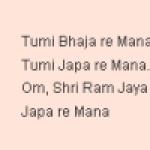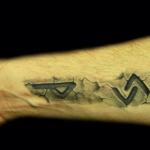Dead wood is an extinct forest, a forest infested with bark beetle, a forest that has suffered from natural disasters.
What is the difference between boards and timber according to GOST 8486-86 from dead wood and how to distinguish healthy fresh wood from bad, low-quality wood, I will tell you in this article
Recently, in the capital's markets, you can often find boards and timber at very high prices. attractive price from 4,600 rub/m3 to 5,000 rub/m3. In 90% of cases, at this price they offer you dead wood and assure you that this is a first-class board produced in accordance with GOST. This material is not suitable for residential construction in most cases, it is infected with the longhorn beetle and bark beetle, which in turn contributes to the mortal danger for the tree.
Such material as dead wood can be purchased for the following purposes:
Construction of formwork;
Construction of scaffolding;
Construction of temporary facilities;
Construction of a temporary fence;
For other construction purposes (except residential construction);
If you are offered a board or timber at a relatively cheap price, then think about whether it is worth spending your money on such a purchase. After all, purchasing such material for residential construction is fraught with consequences. The price for dead wood is from 4,600 rubles/m3 to 5,000 rubles/m3. The price for normal fresh wood is from 5,700 rubles/m3 to 6,700 rubles/m3, depending on the type of GOST or TU.
When purchasing online, pay attention to the reputation of the store; whether everything is indicated on the website; pay attention to where the production is located. Dry wood is mainly produced in the Moscow region and nearby areas (due to the large number of fires and droughts in these areas). For example, the boards and timber from dead wood that we sell are produced in the Tver region.
When ordering edged lumber, always check with the manager to see if they will deliver dead wood to you (or it is better to warn that if the machine contains low-quality wood, you will refuse it)
If the construction of your house is carried out construction company or private team whose masters you don’t know well. So you can’t really trust them to buy lumber. good idea(there have been numerous cases when builders knowingly bought bad material for profit purposes).
How to distinguish green forest from dead wood?
Below are photographs of low-quality edged lumber; all these facts indicate dead wood

Holes with a diameter of 3-4 mm are visible on the board, which indicates that the board is infected with bark beetle! Also pay attention to the fact that there is blackness in the places where the wane should be (most likely the forest suffered from a fire)

There are also holes from bark beetle and longhorned beetle larvae. but the color of the wood is natural (the forest suffered from drought or was damaged by pests)

In this photo you can see that the board has partially turned into dust, and has a characteristic red color or dark blue areas. (this means that over time all these areas will turn into dust, and using this material for residential construction is simply dangerous)

Another difference between dead wood and normal wood is the presence of cracks along almost the entire length of the board, and even a through crack is possible at the ends! (on edged boards from normal wood there are also cracks, but they are mostly small and shallow)
I hope the article was informative for you and you understood the dangers of buying dead wood lumber for residential construction.
You can purchase dead wood for rough work on our website at a price of 4,900 rubles/m3 in the section
16.02.2017
There is a prejudice that with proper selection, the trunks of already dead, withered trees will have a number of important advantages. But the practice of using such lumber debunks this myth completely.
The term "deadwood" is applied to trees that have not yet fallen and are standing, but they are already dead. This definition can apply not only to individual trunks, but also to entire sections of the forest. Dead wood is also called lumber cut from dead round timber. Dead wood is distinguished separately. These are dead dry trees that lie on the ground. They can fall, for example, after strong winds, snowfalls and the like.
A tree dies (dries out) not always from old age. This can happen for other reasons, namely:
Critical rise groundwater, accompanied by severe waterlogging of the soil;
Critical decline in groundwater, accompanied by drought;
Prolonged cold with abnormal frosts;
Harmful industrial exposures;
Severe soil compaction;
Forest fires;
Damage by fungi or insects;
Various mechanical damage...

The intensity and speed of such processes depends on various factors. Sometimes destruction occurs in a matter of days (15-20 days) - and a layer of blue 1.5-2 centimeters thick very quickly appears over the entire mass of wood.
Inspection of trunks in dry areas where trees died a long time ago (a year or a year and a half ago) allows us to draw important conclusions. Only 2 percent of all available trunks can be used to produce relatively suitable lumber for construction. 70 percent of this forest can only be used as firewood. The rest can be considered waste containing a huge number of pests and pathogens.
There is a pattern - what longer term from the death of the tree to the moment of its harvesting, the more useless and dangerous the dead wood will be. Dead wood is damaged and destroyed even faster than dead wood, since the contact area of the trunk with the soil is much larger.
In some cases, there is only a few months to have time to select intact sawlogs from the dead wood.
Infection can occur in a warehouse and even in finished structures that have not been subjected to strict antiseptic treatment. In addition, products made from dead wood can act as a source of infection if they are in proximity to normal wood.
In addition to damage by fungi and insects, fallen trees and dead wood are characterized by the loss of physical and mechanical properties important for construction. The wood of a dead tree dries uncontrollably and unevenly, resulting in the formation of quite deep cracks not only along, but also across the fibers. For timber or edged boards GOST from a green forest is completely unusual.

Uneven stresses, in addition to significant cracking in different directions, can lead to deformation of products after sawing the log - warping various types, which are simply impossible to correct during installation, because lumber simply breaks.
The presence of fungal infections and damage by harmful insects is not allowed by GOST standards, not only for aesthetic reasons. These pests feed on wood; after their vital activity, voids and loose areas remain in the trunk, which leads to the following negative phenomena:
Lumber becomes less hard and more capricious during installation and processing;
products are lost load-bearing capacity;
the structures are more heat-conducting and sound-permeable;
loose wood absorbs water to a greater extent.
What is most unpleasant is the fact that it can be very difficult for an inexperienced person to recognize dead wood against the background of lumber from a healthy forest. And not every seller honestly indicates the origin of his goods, which gives him the opportunity to make extra profit (dead round timber and lumber from dead wood, for example edged boards
Looks like we're being fooled and it's very cool!
Yes, y wooden houses from dead wood there are advantages - no shrinkage, slight shrinkage, specific color and texture, plus ingenious marketing. Who doesn't know about houses from Kelo today?
Well, now about the cons. But there are downsides, and what a few!
All dead wood, some more, some less affected various types woodworms and, in a good way, it must be destroyed, since it is a source of infection (read sanitary rules through the forest).
Inside such a tree is a gnawed system of tunnels, rot, waste products of larvae, live larvae, pupae and the insects themselves (beetles). There may be so many life cycles of this entire population living in dead wood that it is quite enough for complete transformation logs into dust.
In our life, we have never seen standing trees that are NOT affected by woodworms anywhere and never - neither in Karelia, nor in the Arkhangelsk, nor in the Vologda regions, nor in Komi, nor in Siberia.
The dead wood harvesters themselves in Karelia confirm that there are no unaffected trees. All the dead wood houses that we saw and all the logs that are shown at regular exhibitions dedicated to wooden houses, also pierced by insects (right at the exhibition in Sokolniki several years ago we saw a wood-boring beetle crawling out of such a log!)
When you imagine what could be in this log, you feel uneasy.
And here, for the owners of a fashion house made from dead wood, there are two options: either let everything go as it goes, and we live together with the possible “population” of the log, or we need to poison these living creatures with chemicals. Then about the benefits of dead wood, how environmentally pure material will have to forget.

A lover of the exotic in the form of a house made from dead wood, who caught the trend and settled in the Kelo house, can live where he sees fit. But! How will woodworms flying out of the logs of a fashionable house affect the trees and forest growing next to such a house? The answer is obvious: they will continue their lineage, which means they will infect nearby trees. And very soon there will be another dead forest near the house from dead wood.
And one more thing: our ancestors never did anything, much less housing! They didn’t build from dead wood.
All of Rus' was made of wood, and at least somewhere in the memory of generations this would definitely remain. And now, when you ask ax-wielding old people from Arkhangelsk to Krasnoyarsk about dead wood, they just open their eyes wide and shrug their shoulders: “It’s utter stupidity - how can this dead tree be used for a house?”

Probably because our ancestors understood and felt nature better than us, building houses for living from dead or diseased wood was considered absurd.
And dead wood is just a dead tree - either from age or from disease.
How does a living tree affect a person? - beneficial. And no one denies this.
How does it affect human dead tree? What about the dead house?
Let someone try to refute it and say that this is good.
Wooden houses made from dead wood (rusk, kelo) - pros and cons. Why doesn’t the Gorodles Group of Companies build log houses from Karelian dead pine? |
Before choosing materials for construction, you need to familiarize yourself with information about what types of lumber there are. Is it worth it buy lumber from dead wood or pay attention to freshly sawn wood, buy pine wood or choose hardwood.
Lumber is often used for construction purposes. For example, for installing roofs, floors and much more. Lumber refers to non-building and construction materials made from wood.
The most commonly used types of lumber are:
Wood is often used to make lumber coniferous. This is due to the fact that coniferous trees usually very tall, and therefore they can be used to make quite long products. Pine is better than spruce for the reason that knots are very common in spruce products, and this significantly damages the products.
In addition, coniferous wood is rich in resins, which protects it from many influences. environment and extends its service life. It's lightweight and durable material, which is easier to process than other types of wood and therefore costs less.
It should also be noted that lumber of coniferous origin rarely lends itself to deformation, and during normal use does not change shape at all.
There is dead wood and fresh sawn wood. Deadwood refers to a tree that has dried up while standing in the forest, and freshly sawed wood refers to products made from freshly cut living wood. The best option- this is a fresh saw, because when choosing dead wood it is impossible to say exactly when and how it was formed. At the same time, fresh sawdust is a fresh product. In our production we use correct methods conservation of lumber, so it has high quality and reliable in operation. Freshly sawn material It has more benefits than dead wood, much lower, as is its quality. For example, boards and timber from dead wood, withstands much less stress on fracture and rupture.
When life cycle dry tree is finally coming to an end, root system slowly begins to die off and the plant itself becomes dangerous, since a small squally wind or hurricane can easily knock down or even uproot dead wood. The drying process that has begun due to external influences natural conditions gives the wood a good resistance to mechanical damage, the influence of various biological factors and exceptional hardness. It is thanks to these characteristics that dead wood (pine, spruce, etc.) is so highly valued in industry.
To guarantee the quality of wood, specialists can monitor dead wood from the beginning of its formation until removal from the forest. After the object passes control and is recognized as a high-quality specimen, the process of removing the trunk from the ground along with the root system occurs in order to minimize damage to the most valuable part of the trunk - the base, as well as to a number of growing plants. Uprooted trunks are removed from the site with extreme care. There are known cases of using a helicopter to correctly and carefully remove a barrel, although this is done mainly in hard to reach places, in mountainous or swampy areas, where it is difficult for other equipment to reach. Before carrying out any work to remove wood, you must obtain permission to cut down dead wood in the forest.
If in the future the dry tree is used to build a house, then the best specimens will be plants that have reached the age of 100 - 200 years. There are very few such specimens and they usually grow in northern latitudes, which significantly increases the price of housing made from such material, but a house built from dead wood amazes with its beauty, quality and durability, it does not shrink and, oddly enough, is less susceptible to fires than a log house from ordinary wood. Therefore, selling dead wood is quite a profitable event.
Clearing the forest of dead wood
Dry and diseased trees in the forest must be constantly monitored and the slightest changes recorded. This is done so that there is an opportunity to intervene in time and turn a dangerous situation in a different direction. There is no need to immediately resort to radical measures; sometimes timely pruning of affected or dried branches may be sufficient. Wood affected by pests, rot or other diseases poses a dangerous threat to other plants in the forest. She needs not only remove in time, but also dispose of quickly, so as not to harm other green spaces and not cause a full-scale epidemic.
Cut down dead wood in whole or in part is sometimes very important. Such a useless, and in some places dangerous, tree only blocks the light of others healthy plants, and if it falls on its own, it can cause mechanical damage to other green spaces. Who knows, perhaps they themselves may turn into dead wood from such injury. During remove dry logging residues timber is an equally important undertaking. This is not only clearing the area for the full growth of other representatives of the forest, but also preventing fire dangerous situations.
Measures aimed at preventing dangerous situations and preventing epidemics are called sanitary or health-improving and should be carried out only by competent specialists who decide whether it is necessary to cut down dead wood and cut down diseased plants or not.
Cutting down unnecessary, dry and or diseased plants can be done in 2 ways:
- 1st method. Clear sanitary felling. It is carried out when dry trees predominate in the selected area of the forest. Such cutting occurs when the affected plants make up 40% or more of the tree stand in one location. These areas are subject to complete renovation of green spaces as soon as possible.
- 2nd method. Selective sanitary cutting. It is carried out to partially localize certain objects among other trees in the forest. This work is considered more painstaking and sometimes, in order to neutralize one dry tree, it may take much more effort and time than with clear sanitary felling, when plants are cut down all in a row. The difficulty of the work lies not so much in the careful cutting of a dry branch or the entire tree, but in ensuring the safety of the remaining green spaces.
In any case, before starting any work, i.e. Immediately before a decision is made to remove, the plant should be inspected by a specialist who assesses the degree of risk to other trees. Experts will suggest the most suitable cutting method based on the current situation and terrain. After this, a logging ticket for dead wood must be issued, and only then a team of contractors is selected who will carry out this work.
Careful and skilled removal of dry wood will clear the forest, which will create a favorable opportunity for planting young trees and renewing the green fund.
Cleaning up dead wood in the city
Cutting down dead trees within the city– this is a complex and dangerous undertaking. Only experienced climbers and employees of green space removal companies can carry it out quickly and without loss of quality. In parks, recreation areas, botanical gardens, public gardens, not only sanitary cabin dry and damaged plants, but also pruning, when only the crown or branch of dead wood is removed, and the rest remains untouched. Such an event is designed to preserve the aesthetic appearance of recreation areas for citizens. In addition, complete removal of the entire tree is a more expensive process, both in time and money. In most cases, it is enough to simply cut or crown a part of the plant to solve the problem. In addition, cutting down or felling the entire object will require further uprooting of the stump in order to get rid of the tree completely.
Many people think that there is nothing dangerous in removing dead wood, but buying a chainsaw for this is not enough. Any work with dry trees, wherever it is carried out, must be carried out in accordance with current regulations and legal standards. Each organization or company that will carry out the felling or sawing process must have all permitting documentation, and workers - a certificate for carrying out the relevant work.
Elimination of dead wood can occur as entirely, so in parts. If the space under the tree allows, then you can choose a simple method of felling the entire tree, in the direction of the natural slope of the trunk or in the opposite direction, using a guy.
Most often, dead wood is cut down in urban areas in parts.. An unreliable trunk gives very little chance for a climber or arborist to climb it, so there is a need for special equipment: aerial platform and truck crane. In this case, the load capacity of the machine must be at least 200 kg. If there is no free area under the tree for dumping cut fragments, then the method of hanging cut fragments on neighboring trees or using a truck crane is used. It will be necessary to spend a lot of time to remove such dead wood, and the price will be much higher than for the usual cutting down of the entire plant.
Uprooting dry trees can be done only in two stages: in the first, the trunk itself is cut down, in the second, the remaining stump is removed along with the roots.
Dead wood cleaning services
"Arborist" can qualitatively resolve all issues related to the removal of dead wood and disposal of all logging waste and wood debris. The site after us will look very attractive, and most importantly, there will be no dangerous dry plants on it. Trust our experience and professionalism and you won’t have to rack your brains over the question: “What fine will you have to pay for cutting down dead wood near your house?” Our experienced specialists will thoroughly explain every step to you, provide you with all the necessary papers and good mood will start work. The company understands all the possible risks of such a difficult process as removal of dead wood and approaches this problem responsibly.
"Arborist" In addition to timely and prompt disposal of logging residues, it can buy from you good, but unnecessary firewood of various types of wood and remove it from your territory immediately.
Dead wood video




